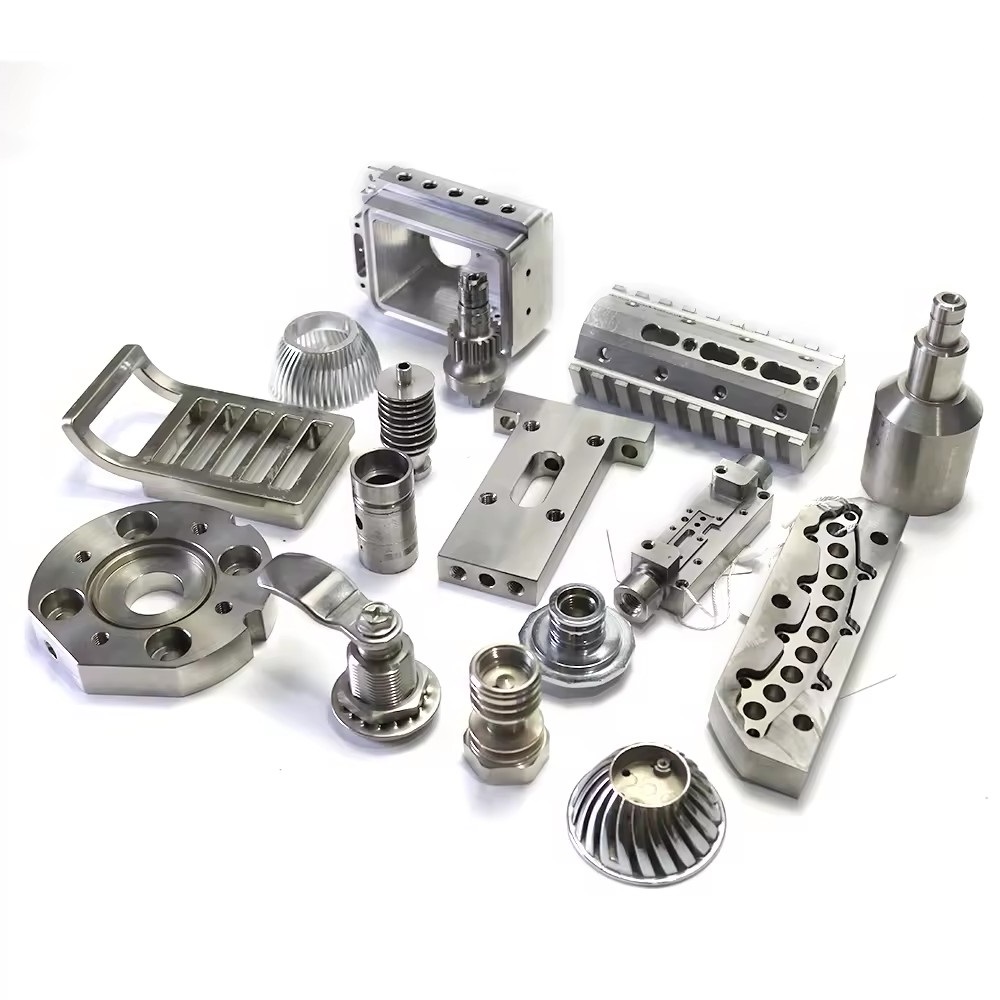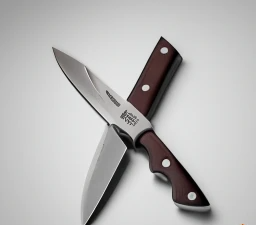Mild Steel vs Stainless Steel: Which is Better
 Jun 14,2024
Jun 14,2024

Steel is a versatile and a unique alloy. it is a combination of iron, carbon with some other elements. Strength and ductility depend on the amount of carbon present. But alloying elements addition with different amounts can significantly change its properties. Every type of application has a different grade of alloy steel. here we are discussing mild steel and stainless steel. This article will explore all the important aspect for both steels.
Definition and Types of Mild Steel
Mild steel is a low carbon alloy steel. the carbon content is up to 0.25%. it is a plain carbon alloy steel and contains no alloying elements. However, there are few traces of silicon and manganese, less than 1%. Due to low carbon content, it is ductile, malleable with good machinability and weldability. There are few limitations due to its low corrosion resistance. it is mostly used for structural applications which does not require high tensile strength.
Definition and Types of Stainless Steel
Stainless steel is an alloy steel which has higher carbon content than plain carbon alloy steels. It has high chromium content which provides high corrosion resistance. stainless steel has chromium content up to 10-20% depending upon the grade and has carbon level up to 1.2%. iron oxidation does not occur in stainless steel due to significant chromium content. The additional alloying elements like Ni, Mo, Cu or Ti provide high mechanical strength and improve physical properties. It is mostly used in cookware and cutlery like knives.

stainless steel parts
Applications and Parts of Mild Steel and Stainless Steel
Medical Devices
Surgical implants are normally made of stainless steel. it is used to make replacements joints and artificial hip bones. It also utilizes in joining devices. These are like pins and plates for broken bones.
Food Processing Equipment
In the food processing industry, steel is used to make kitchen cookware, cutlery like knives. Utensils like knives or cookware must be made of less ductile material which is made of high carbon steel or stainless steel. ductile material like mild steel is used to make grills, sinks and cookers.

stainless steel knives
Chemical Processing Equipment
stainless steel and other alloy steel have high corrosion resistance. they can withstand harsh chemicals. It is a common high carbon steel for pressure vessels and tanks. It’s high corrosion due to high chromium content and is ideal for using chemical transportation containers. Among alloy steels, stainless steel has low maintenance and cost-effective option for a long-term usage.
Marine Components
Among alloy steels, high carbon steels have high strength and corrosion resistance. Like stainless steel used in making frames of shipping containers and other marine components. It can survive high pressure and temperatures in salty water due to high chromium content. It can also be used in making engine parts due to high corrosion resistance.
Automotive parts
Stainless steel is one of the alloy steels that was introduced to automotive industry in 1930s. it is used to make auto parts like grills, trims, and exhaust system and other structural parts. It is used in transportation like freighting and shipping containers, tankers and refuse vehicles.
Construction components
Due to high strength in high carbon steel and high corrosion resistance due to high chromium content makes them suitable for building trade. stainless steel, mostly used for building interiors like countertops, handrails and also as cladding material externally due to high impact resistance. Dutile material like mild steel is also used in building architecture due to good weldability and easy maintenance. For sustainable building, these alloy steels are recyclable materials.
Consumer products
Stainless steel and mild steel both are preferred materials for daily usage products. Kitchen items like utensils, cookware and cutlery like knives are made of stainless steel. Kitchen sinks, saucepans or grills are made of ductile material like mild steel. High carbon steels are preferred construction material due to high strength.
Advantages and Disadvantages of Mild Steel and Stainless Steel
Advantages of Mild Steel
- Cheap: mild steel is a cost-effective material as compared to other alloy steel. It is budget-friendly option for many projects.
- High formability and machinability.Mmild steel is a ductile material. It can easily be bend to any shape hence making it formable and machinable material for complex shapes.
Advantages of Stainless Steel:
- Corrosion resistance: stainless steel has high chromium content. This makes it more corrosion resistant material suitable for harsh atmospheres.
- High strength and durable: it is a high carbon steel and has high hardness and strength which makes more durable than mild steel.
- Environmentally friendly: stainless steel is recyclable and has low maintenance cost and is easily cleanable material among alloy steels. That is why it is mostly used in cookware and for cutlery like knives.
Disadvantages of Mild Steel
- Low strength: mild steel is malleable and has low strength as compared to stainless steel.
- Less corrosion resistant: there is no alloying element in mild steel unlike stainless steel which makes less rust resistant material.
Disadvantages of Stainless Steel:
- Costly: stainless steel is expensive than mild steel due to high chromium content and having other alloying elements unlike mild steels.
- Difficult machining and less formable: it is a high carbon steel is difficult to machine and not easily formable due to having high hardness than mild steels.
Chemical Composition
Mild steel composition
|
Alloying elements |
Percentage |
|
Carbon |
<0.25% |
|
Sulfur |
0.005% |
|
Phosphorus |
0.04% |
|
Manganese |
0.3-0.6% |
|
Iron |
Balance |
Stainless steel composition
|
Alloying elements |
Percentage |
|
Carbon |
<0.15% |
|
Chromium |
17-19% max |
|
Nickle |
8-10%max |
|
Titanium |
2-5% |
|
Molybdenum |
2-3% |
|
Sulphur |
<0.15% |
|
Copper |
2-4% |
|
Silicon |
0.02% |
|
Phosphorus |
0.04% |
Corrosion Resistance
Stainless steel is one of the most corrosion resistant materials in the world. It has high chromium content and other alloying elements like Ni and Ti which makes it a more resistible material. However, mild steel is not corrosion resistant and cannot survive harsh conditions.
Physical Properties
|
Properties |
Stainless steel |
Mild steel |
|
Color |
Shiny |
Dull |
|
Density |
7.75g/cm3 |
7.850g/cm3 |
|
Melting Point |
1420℃ |
1450℃ |
|
Magnetism |
No |
Yes |
|
Coefficient of Thermal Expansion |
18.7μm/m°C |
10.8 to 12.5 μm/m°C |
|
Electrical Resistivity |
70 x10−7 Ωm |
In order of 10−7 Ωm. |
|
Specific Heat |
502J/gK |
510J/g K |
|
Electrical conductivity |
1.8×10−6S/m |
1.43×10−7S/m |
|
Thermal conductivity (W/(m·K)) |
15 |
50 |
Mechanical Properties
Hardness
|
Material |
Vickers hardness |
Rockwell |
Birnell |
|
Mild steel |
140 |
70 |
120 |
|
Stainless steel |
178 |
90 |
500-3000 |
Tensile Strength
|
Material |
Tensile strength |
|
Mild steel |
340-440MPa |
|
Stainless steel |
500-750MPa |
Yield Strength
|
Material |
Yield strength |
|
Mild steel |
250MPa |
|
Stainless steel |
500-650MPa |
Elongation
|
Material |
Elongation |
|
Mild steel |
15% |
|
Stainless steel |
60-70% |
Weldability
Mild steel has higher weldability than stainless steel. stainless steel is a high carbon alloy and has alloying elements which makes it a hard a material. High chromium content in stainless steel protects its surface from wear and tear. Therefore, weldability of stainless steel is more difficult than mild steel.
Machining
Compared to mild steel, stainless steel has difficult machining. It has high hardness due to being high carbon alloy and high chromium content.
Surface Treatments and Finishing
stainless steel gives good results for surface treatment and finishing. It has shiny surface than mild steel which look dull. stainless steel is visually polished and lustrous.
Is stainless steel stronger than mild steel?
Yes, it is stronger than mild steel. It has alloying elements unlike mild steel. and it is a high carbon steel. It also has higher chromium content. It is used in cookware and cutlery like knives. Mild steel has low tensile, yield strength and hardness.
Summarize Differences Between Stainless Steel and Mild Steel
stainless steel is stronger than mild steel. It has high tensile, yield strength, hardness, and corrosion resistance. it is high carbon stee and has more alloying elements. It is mostly used in cookware and cutlery like knives. It has a shiny, polished, and lustrous look. This makes it a good construction and architectural material.
Which is Better of CNC Machining Mild Steel or Stainless Steel
Mild steel machining is used where low cost and high ductility are required. Stainless steels are the most used machining material because it has high hardness, strength corrosion resistance and cost-effective material. it is easy to clean that is why used in cookware and also for making knives.
 Tel/WeChat:
Tel/WeChat:  Email:
Email: 
 Home
Home
 304 vs 409 Stainless Steel: Which Do You Think Is Better?
304 vs 409 Stainless Steel: Which Do You Think Is Better? 







